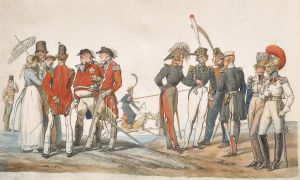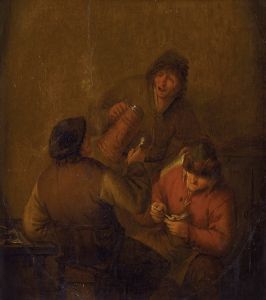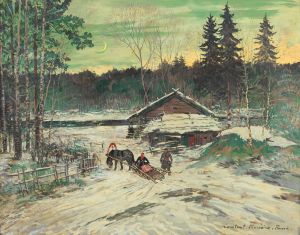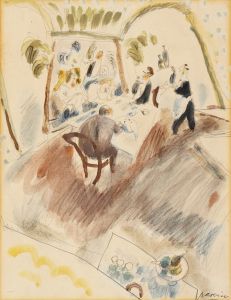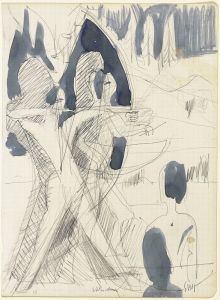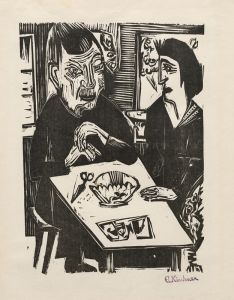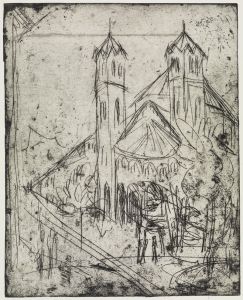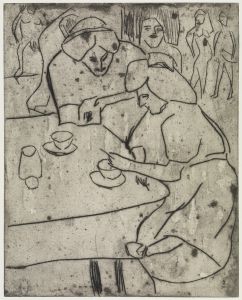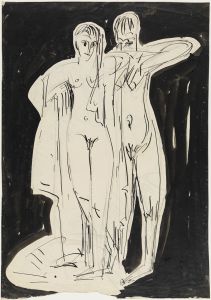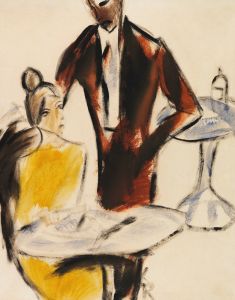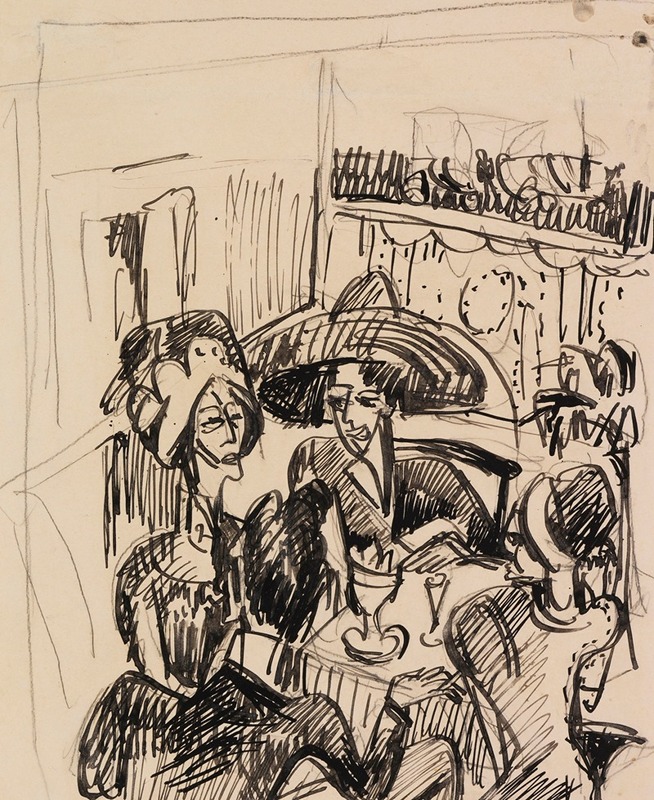
Unterhaltung im Café
A hand-painted replica of Ernst Ludwig Kirchner’s masterpiece Unterhaltung im Café, meticulously crafted by professional artists to capture the true essence of the original. Each piece is created with museum-quality canvas and rare mineral pigments, carefully painted by experienced artists with delicate brushstrokes and rich, layered colors to perfectly recreate the texture of the original artwork. Unlike machine-printed reproductions, this hand-painted version brings the painting to life, infused with the artist’s emotions and skill in every stroke. Whether for personal collection or home decoration, it instantly elevates the artistic atmosphere of any space.
"Unterhaltung im Café" (Conversation in the Café) is a painting by the German expressionist artist Ernst Ludwig Kirchner, created in 1909. Kirchner was a founding member of the influential art group Die Brücke (The Bridge), which played a crucial role in the development of Expressionism in the early 20th century. This movement sought to convey emotional experience rather than physical reality, often through bold colors, distorted forms, and dynamic compositions.
The painting depicts a lively café scene, a subject that was popular among artists of the time, reflecting the vibrant social life and cultural dynamism of the early 1900s. Cafés were central to urban life, serving as meeting places for intellectuals, artists, and the general public. In "Unterhaltung im Café," Kirchner captures the essence of this social hub with his characteristic style.
Kirchner's use of color in the painting is notable for its intensity and contrast. He employs a vivid palette, with strong greens, blues, and reds, which are typical of his work during this period. These colors are not used to represent reality but to evoke the emotional atmosphere of the scene. The figures in the painting are rendered with elongated forms and angular lines, a stylistic choice that emphasizes movement and interaction among the café's patrons.
The composition of "Unterhaltung im Café" is dynamic and somewhat chaotic, reflecting the bustling environment of the café. Kirchner arranges the figures in a way that suggests conversation and engagement, with overlapping forms and intersecting lines that guide the viewer's eye across the canvas. This sense of movement is a hallmark of Kirchner's work and is indicative of his interest in capturing the energy of modern urban life.
Kirchner's work, including "Unterhaltung im Café," was influenced by various sources, including African and Oceanic art, which he admired for its perceived authenticity and emotional directness. This influence is evident in the simplified forms and expressive lines of the painting. Additionally, the work of post-impressionist artists such as Vincent van Gogh and Paul Gauguin can be seen in Kirchner's bold use of color and expressive brushwork.
"Unterhaltung im Café" is an example of Kirchner's exploration of modernity and the human experience within it. The painting reflects the artist's fascination with the social changes occurring in Germany at the time, as well as his desire to break away from traditional artistic conventions. Through his work, Kirchner sought to create a new visual language that could express the complexities of contemporary life.
Today, Ernst Ludwig Kirchner is recognized as one of the leading figures of German Expressionism. His work, including "Unterhaltung im Café," continues to be celebrated for its innovative approach and emotional depth. The painting is held in high regard and is part of the collection of the Museum Ludwig in Cologne, Germany, where it is appreciated by art enthusiasts and scholars alike for its contribution to the understanding of early 20th-century art movements.





